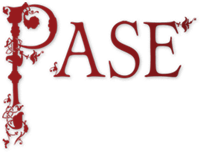Table of Contents
Top of page
Name
Summary
Distribution Map
Property List
Profile
Bibliography
Bottom of page
Leofgyth 3
Leofgyth ‘of Roding’ (Essex), fl. 1066
Female
DWP
4 of 5
Summary
Leofgyth 3 held an estate in west Essex TRE assessed at ½ hide and with a value of 10s; her lord was Esgar the staller (Esgar 2).Distribution map of property and lordships associated with this name in DB
List of property and lordships associated with this name in DB
Holder 1066
| Shire | Phil. ref. | Vill | DB Spelling | Holder 1066 | Lord 1066 | Tenant-in-Chief 1086 | 1086 Subtenant | Fiscal Value | 1066 Value | 1086 Value | Conf. | Show on Map |
|---|---|---|---|---|---|---|---|---|---|---|---|---|
| Essex | 30,43 | White Roding | Leuid | Leofgyth 'of Roding' | Esgar the staller | Geoffrey de Mandeville | Geoffrey Martel | 0.50 | 0.50 | 0.60 | B | Map |
| Totals | ||||||||||||
Profile
Leofgyth 3 is identified primarily because DB explicitly describes her as a woman and no other TRE estate is certainly attributed to a woman with the uncommon name Leofgyth. In addition, there is no nearby TRE landholder of uncertain gender but similar name (such as some of those here attributed to the name Leofgeat) with whom she could be confused or associated; nor, similarly, can any association between her and any contemporary woman called Leofgifu be demonstrated.Leofgyth 3’s estate was called Rodinges and was one of at least four DB holdings identifiable within White Roding parish in west Essex, although its precise location is uncertain (Bassett 1997: 29, 38). It had the smallest proportion of meadow to overall assessment of the four known White Roding estates in DB (at 4 acres in ½ hide, relative to a total of 63 acres in just under 5½ hides), which may indicate that much of her land lay not near the River Roding but more on the higher ground towards the watershed with the Pincey Brook; but DB provides too little information to press the matter further.
DB states that the estate was held TRE by Esgar the staller (Esgar 2) and by ‘Leofgyth, a certain woman, under Esger’ (Leuid quedam femina sub ansgaro); but whether Leofgyth 3 was ‘under’ Esger’s lordship by commendation or dependent tenure, or both, is uncertain.
Bibliography
Bassett 1997: S. Bassett, ‘Continuity and fission in the Anglo-Saxon landscape: the origins of the Rodings (Essex)’, Landscape History 19 (1997), 25-42
